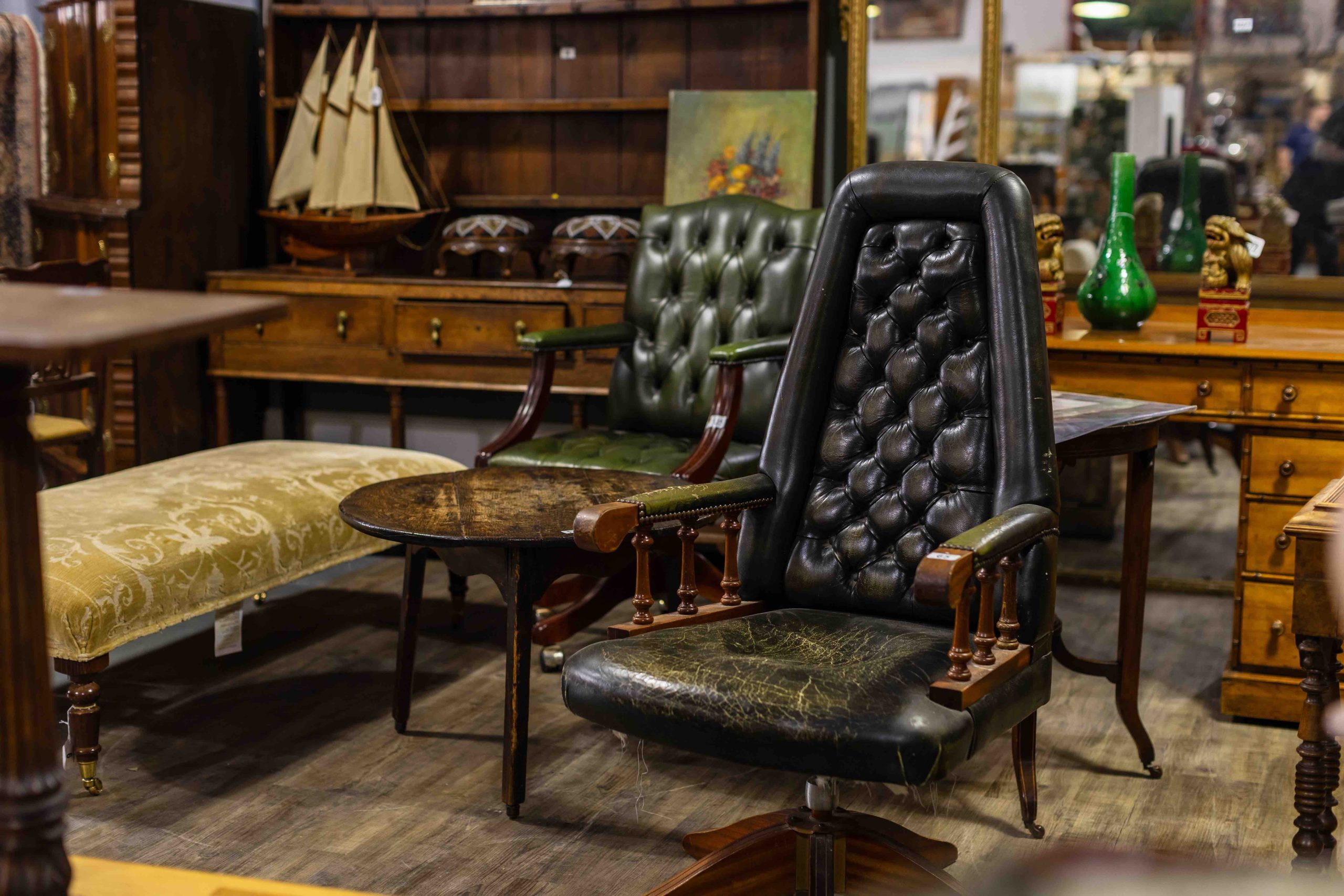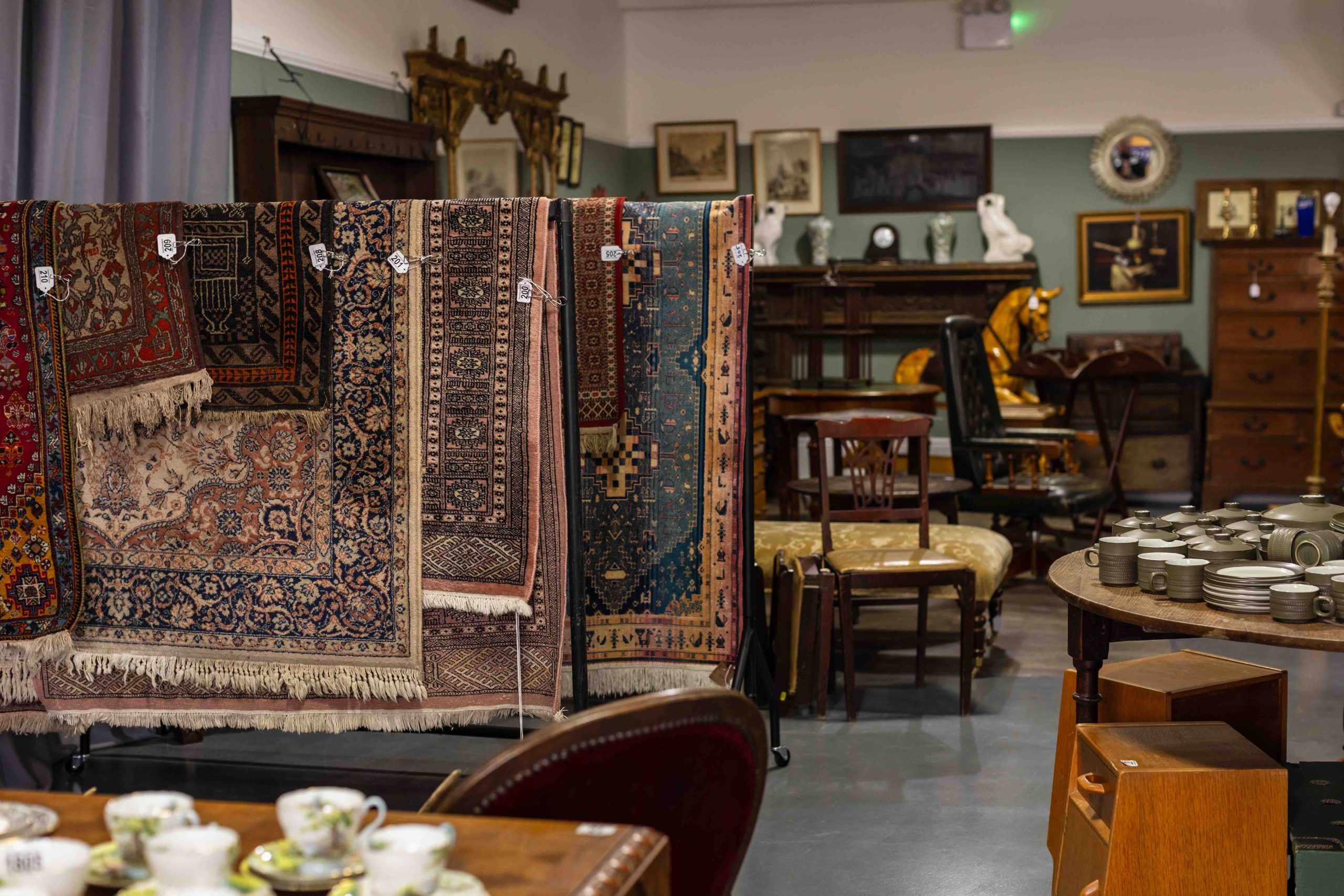Guide to Antique Rugs
Antique rugs have been popular with collectors for centuries, with the oldest known example dating to 400BC. Over the past decade there has been a resurgence in interest with fine examples now treated more like works of art than interior decor. At Churchill Auctioneers our monthly auctions regularly feature a selection of antique rugs, so we have put together a short guide to help navigate this growing market.
Churchill Auctioneers Guide to Buying Antique Rugs
Buying antique rugs can be a rewarding endeavour, adding beauty and historical value to your home. This guide will help you navigate the process, from understanding types of rugs to identifying authenticity and making informed purchases.
1. Understanding Antique Rugs
Types of Antique Rugs
- Persian Rugs: Known for their intricate designs and high-quality craftsmanship. Key regions include Tabriz, Kashan, and Isfahan.
- Oriental Rugs: Includes rugs from Turkey, China, India, and Central Asia. Each region has distinctive patterns and weaving techniques.
- Tribal Rugs: Made by nomadic tribes, these rugs often feature geometric patterns and natural dyes. Examples include Baluch, Kurdish, and Turkmen rugs.
- European Rugs: Includes Aubusson and Savonnerie rugs from France, known for their floral and classical designs.
2. Key Characteristics of Antique Rugs
Materials
- Wool: Most common material, valued for its durability and softness.
- Silk: Used for finer, more luxurious rugs. Known for its sheen and detailed designs.
- Cotton: Often used for the foundation of the rug.
Weaving Techniques
- Knots per Square Inch (KPSI): Higher KPSI generally indicates finer quality. Persian rugs often have a high knot density.
- Pile: The thickness of the rug, with higher piles being thicker and more plush.
- Flatweave: No pile, often seen in kilims and other tribal rugs.
3. Identifying Authenticity
Age and Patina
- Signs of Age: Genuine antique rugs will show signs of wear, fading, and patina. Look for consistent wear patterns, particularly in high-traffic areas.
- Natural Dyes: Antique rugs often use natural dyes, which age gracefully and show variations in colour.
Provenance
- Documentation: Authentic rugs often come with documentation detailing their history and origin.
- Rug Experts: Consider consulting with a reputable rug dealer or appraiser to verify authenticity.
4. Recognising Quality
Craftsmanship
- Intricate Designs: High-quality rugs feature intricate and symmetrical designs.
- Even Weave: Check the back of the rug for uniform weaving and knotting.
- Materials: High-quality wool or silk with natural dyes usually indicate better craftsmanship.
Condition
- Damage: Check for signs of moth damage, holes, or significant repairs. Some wear is expected, but extensive damage can affect value.
- Restoration: Minor restorations are common, but they should be professionally done to preserve the rug’s value.
5. Where to Buy Antique Rugs
Reputable Dealers
- Auction Houses: Churchill Auctioneers monthly sales are a great starting point, but most auction houses will have a silver section in their auctions or even specials silver sale days. Ensure you understand the bidding process and fees involved.
- Antique Rug Dealers: Specialised dealers often have a curated selection of genuine antique rugs. Ensure the dealer has a good reputation and offers guarantees of authenticity.
- Antique Shops: Established antique shops may carry a selection of antique rugs. Build a relationship with the shop owners for better insights and deals.
Online Marketplaces
- Specialised Websites: The Oriental Rug Merchant, Farnham Antique Carpets and Brian MacDonald Antique Rugs & Carpets.
- General Marketplaces: eBay and Etsy can have antique rugs, but exercise caution and verify the seller’s credibility.
6. Price and Value Considerations
Factors Influencing Price
- Age: Older rugs are generally more valuable, especially if well-preserved.
- Rarity: Unique or rare patterns and weaves increase a rug’s value.
- Condition: Rugs in good condition with minimal repairs are more valuable.
Negotiation
- Do Your Research: Know the typical prices for the type and quality of rug you’re interested in.
- Be Ready to Negotiate: Prices can often be negotiated, especially in antique shops and markets.
7. Caring for Your Antique Rug
Cleaning and Maintenance
- Regular Cleaning: Vacuum gently to remove dust and dirt. Avoid using a vacuum with a beater bar.
- Professional Cleaning: Have your rug professionally cleaned every few years to remove deep-seated dirt and preserve its colours.
Preservation
- Avoid Direct Sunlight: Prolonged exposure to sunlight can fade the colours of your rug.
- Rotate Regularly: Rotate the rug every few months to ensure even wear.
- Use a Rug Pad: A pad can prevent slipping and reduce wear on the rug’s fibres.
8. Legal and Ethical Considerations
- CITES: Be aware of regulations regarding the import and export of rugs made from protected animal fibres like silk from wild silkworms.
- Cultural Sensitivity: Respect the cultural heritage and significance of the rugs you purchase. Avoid supporting looting or unethical trade practices.
Conclusion
Collecting antique rugs is a blend of art appreciation and historical interest. By understanding the different types, recognising quality and authenticity, and following best practices for buying and caring for your rugs, you can build a valuable and aesthetically pleasing collection. Happy collecting!


